We test and review fitness products based on an independent, multi-point methodology. If you use our links to purchase something, we may earn a commission. Read our disclosures.
With so much data available for tracking your health and fitness, how do you know what’s useful and what isn’t? Experts break it all down for you here.
Technology has quickly worked its way into the fitness equipment market. From smart home gym machines to fitness trackers, there are more stats, metrics, and features than lots of us know what to do with.
One in five US adults wears a fitness tracker1, so for many of us, it’s important to understand what we’re actually looking at in terms of metrics. Without understanding or properly utilizing the many things a fitness tracker can monitor, you’re essentially paying for a glorified wall clock.
In a recent survey, only 30% of fitness tracker users2 said they found their device “very helpful” in terms of assisting them meeting their goals. I have to wonder if this is because users often don’t really understand the metrics available, which is why I’m here to help you determine what you should be looking at, no matter what your end game is.
RELATED: Best Fitness Trackers
What Are Fitness Metrics?
Fitness metrics are trackable measurements that help you calculate and understand your current fitness level. The more common metrics that fit folks tend to track are:
- Heart rate
- Body fat percentage
- Calories
- VO2 Max
- Steps
- Sleep quality
- One-rep max
I’ll go into more detail on the “how and why” of a few of these fitness metrics in the following paragraphs.
Breaking Down the Metrics
“The data coming from your tracker is only good if you understand it,” says Julia LeBlanc, doctor of physical therapy. “But, if you can harness the information and put it to practical use, you can really see changes in everything from your sleep patterns to how your body feels to how your body looks.”
Here’s a quick look at some of the most important metrics that nearly all fitness trackers offer:
Steps
Remember watching Frosty the Snowman as a kid? I always loved the “Put One Foot in Front of the Other” song Kris Kringle sang. He was obviously counting his steps via his fitness tracker and wanted everyone to know it. Okay, not true, but he was talking about walking.
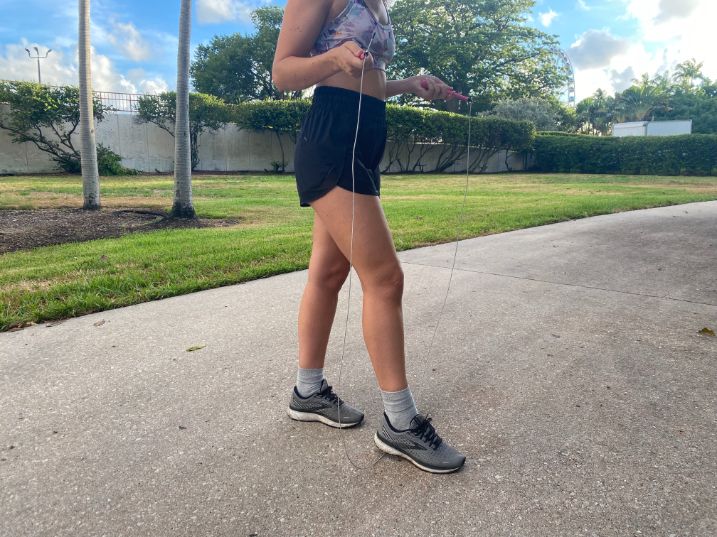
If there is one metric I believe everyone should track, it’s step counting. Studies have shown that taking 10,000 steps per day can “reduce negative mood, improve BMI, and cardiovascular outcomes3.” It’s a great way to improve both your mental and physical health.
The step-counting function on a fitness tracker includes all movement from walking to the bathroom to running a challenging marathon. If this is the only thing you want to track, pretty much every single fitness tracker on the market has this feature, so you’re in luck.
I’d recommend going for a budget option (for simply step tracking), like the Xiaomi Mi Smart Band 6. At under $50, this user-friendly fitness tracker can monitor things like steps taken, workouts completed and more. Plus, the screen is bright and larger than previous iterations. Win-win.
One of the reasons that tracking steps helps is because it encourages you to move all day long. This stimulates several of your body’s metabolic functions, which is great for digestion, weight loss, and more.
Julia LeBlanc, doctor of physical therapy
Calories Burned
If your goal is to gain or lose weight, you might be interested in seeing how many calories you’re burning daily, whether this is through walking the dog or doing an intense HIIT session.
To put it simply, calories are units of energy. Your fitness tracker is using information you’ve given it (like your sex, height, and age) combined with heart rate to generate an estimate on how many calories you’ve burned doing an activity.
I like the Fitbit Inspire 2 for those who need a weight loss (or gain) focused tracker. This watch gives hourly reminders to move, tracks over 20 different types of workouts, and counts calories burned. Plus, you can track your daily food intake within the compatible Fitbit app.
RELATED: Best Waterproof Fitness Trackers
It is worth noting that the amount of calories your tracker says you’ve burned in a day is not always taking into account your Basal Metabolic Rate or BMR. Your BMR is essentially the calories that your body burns just to keep you alive. For example, with the Apple Series 6 Watch, you can see your BMR, but you have to open the Fitness app and look at the higher number in smaller print under the ‘Move’ amount of calories.
It can be interesting to see how many calories you burn in a day, but unless you’re looking to gain or lose weight, it’s not a super important metric to be religiously looking at. It’s also worth keeping in mind everyone’s body needs a different amount of calories to work at it’s best, so try not to compare your numbers with friends or a partner. (I know it can be tempting; looking at all you competitive people out there)
Heart Rate
Most fitness trackers continuously track your heart rate throughout the day. Provided you are not on medication that increases your heart rate, you ideally want to see less than 85 bpm, or “beats per minute” when at rest, which is essentially saying how many times your heart beats in one minute when you’re doing something like relaxing on the couch. If you’re running a mile quickly, you’ll see your heart rate spike. When working out, you want to see your heart rate getting high, because it shows you’re exerting yourself and can help long-term with blood pressure control4.
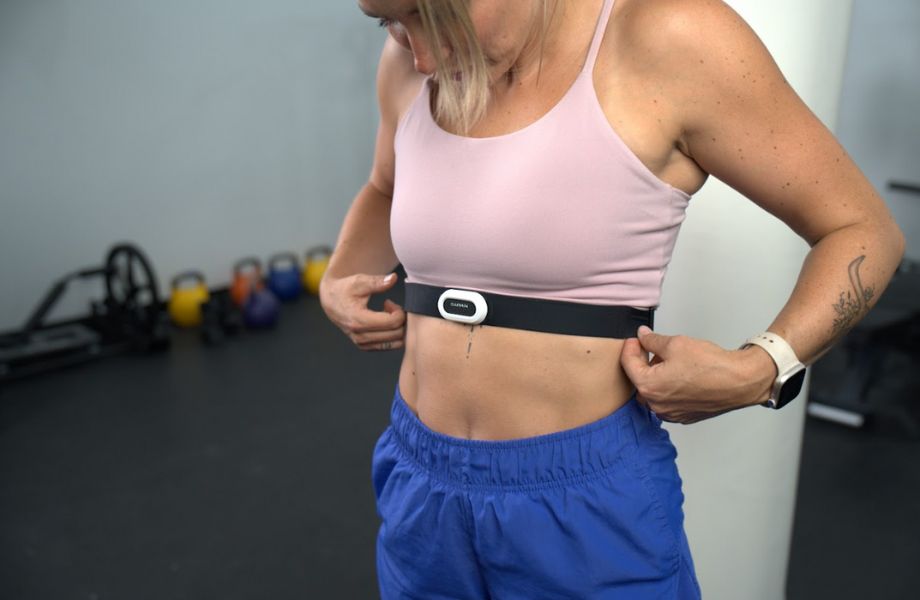
However, it can be hard to know what a high heart rate looks like for you specifically since everyone is so different. According to the American Heart Association5, your target heart rate (and maximum heart rate) will decrease as you get older. For example, if you’re in your 20’s, your maximum heart rate is usually around 200 bpm. Compare this to the average 50 year old, who has a 170 bpm maximum heart rate.
Curious why your heart rate decreases as you get older? It’s simply because older hearts cannot beat as fast or as often as younger hearts can (and you may take in less oxygen as you age6).
For those interested in finding their maximum heart rate, simply take 220 and subtract your age. The Mayo Clinic7 says once you know your maximum heart rate, you’ll be able to figure out how much you’re pushing yourself and the heart rate you should shoot for while working out.
Want a fitness tracker that can check your vitals and more? The Apple Watch can keep tabs on things like your workouts, daily activity, sleep, calories burned, and more. Plus, you can monitor your heart rate throughout the day (not only while working out) by clicking the heart shaped icon on your watch.
If you’re looking to hit average exertion during your workout or are just beginning a fitness journey, look to hit between 50% to 70% of your maximum heart rate. For more advanced fitness junkies, hitting 70-85% of your maximum heart rate should give you a vigorous workout.
Oxygen Levels
Recently, fitness trackers have started being able to track your oxygen levels. This is important because oxygen is what fuels the body8, and not getting enough oxygen can be detrimental to your health long-term (plus likely indicates a deeper issue).
According to the CDC, a good oxygen saturation range is between 95% to 100%.
“If your blood oxygen level is too low, you might experience things like dizziness, high blood pressure, and feeling like you’re having trouble catching your breath,” says pulmonologist Dr. Pena-Hernandez.
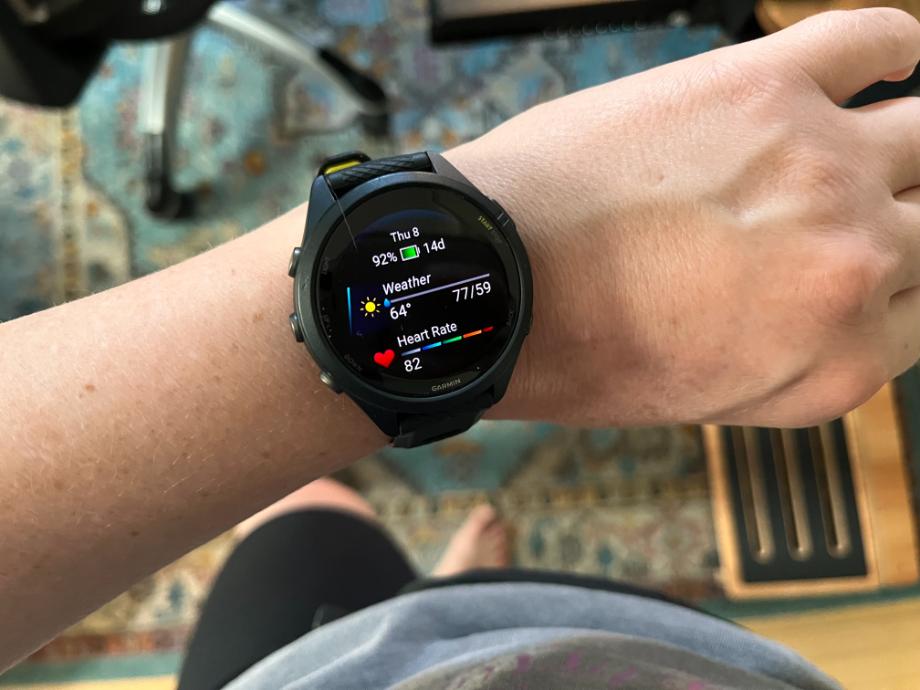
Fitness trackers like the Garmin Forerunner 245 use a Pulse Ox sensor on your wrist to measure your individual blood oxygen level. The tracker will give you a percentage and the time it last tracked your saturation. Obviously a fitness tracker is not a substitute for a doctor, so if you feel any of the symptoms of low oxygen, consult a medical professional as soon as possible.
RELATED: Best Garmin Fitness Trackers
Breathing Patterns
Ever been so stressed at work that you find yourself holding your breath? Yeah, me, too. When you’re stressed, the hormone cortisol9 is released into your bloodstream. If you’re chronically in this state, a host of health issues can pop up, including high blood pressure, weight gain, and memory impairment.
Fitness trackers like the Fitbit Versa can sense when you’re holding your breath due to stress and guide you through diaphragmatic breathing, which studies have shown can “trigger body relaxation responses10.” The Versa also offers meditation videos if you need to have longer calm-inducing minutes.
Plus, I like being able to stop every once in a while and take a few deep breaths. It’s a nice break from the hustle and bustle of life and can benefit my health (and yours). Sign me up!
These biometric patterns are all things I would recommend tracking, if not for the sole purpose of seeing how your heart rate improves as your fitness level increases. It can be a non-weight related way to see changes as a result of increasing movement and exerting yourself more. These stats can also nudge you into habits that will make for a healthier and happier life (like taking more deep breaths).
Sleep Quality
Getting a good night’s rest is essential for feeling good and having proper amounts of energy the next day. Depending on the fitness tracker, you’ll likely be able to view a variety of sleep stats including restlessness and if you’re getting light or deep sleep.
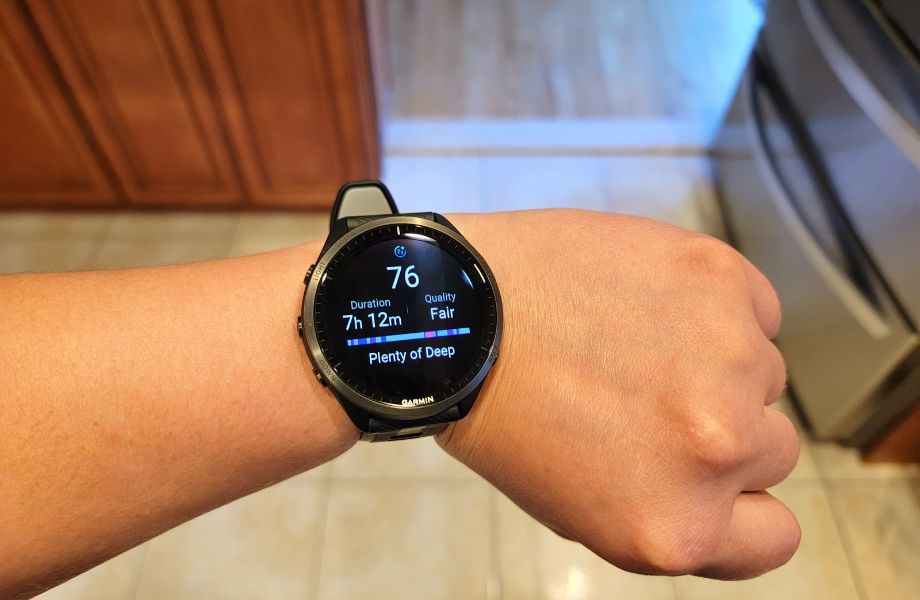
Sleep goes hand-in-hand with being healthy. In fact, long term sleep deprivation can lead to a host of issues11 including decreased brain function, increase of likeliness of disease, and lowered immune system. This is something that isn’t subjective; you should be concerned with getting enough sleep each night.
According to the American Academy of Sleep Medicine and Sleep Research Society12, adults should shoot for 7+ hours of sleep each night to feel their best. You’ll also ideally hit 4 to 6 REM cycles13 with a solid night of sleep.
If you’re willing to sleep in your tracker, the Garmin vivosmart 4 can provide you with insightful metrics to learn more about your nightly slumber. This watch tracks your blood oxygen levels, your REM cycles, and how much you tossed and turned throughout the night. You’re able to view these metrics (and more) though the Garmin Connect app.
Studies have shown that “tracking sleep behavior empowers users to engage in healthier sleep habits14.” So, even though the sleep tracking you might be getting on your fitness tracker isn’t comparable accuracy wise to a lab’s metrics, it can still encourage you to create healthy habits that will lead to better sleep.
VO2 Max
VO2 max is a measurement of your max oxygen consumption when your body is active. It isn’t the easiest to accurately measure outside of a clinical setting, but there are VO2 max calculators that can give you a ballpark estimate. Unless you’re an elite athlete or need this measurement due to health concerns, you more than likely won’t need to track your VO2 max in the same way you’d track your heart rate or calories.
RELATED: Best Fitness Tracker Rings
Strain/Readiness
For those of us who struggle to prioritize rest, having a fitness tracker that tells us when to slow down can be very helpful. Recently, fitness trackers have added a handy metric to tell you how ready your body is for physical activity or a strenuous day (scores vary between brands of trackers). These scores are based on the workouts you’ve recently done, sleep, and sometimes even alcohol consumption.
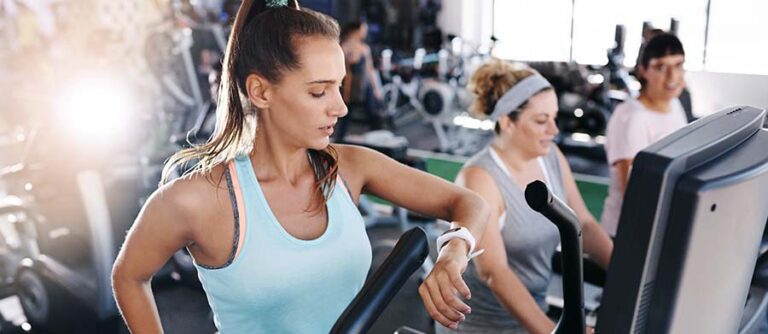
As a former collegiate athlete, learning to listen to my body when it wants to rest has been the biggest challenge for me post-grad. I like the Whoop 4 as a tool to assist me in this way because it gives a daily strain score to make sure you’re not over (or under) doing it. This tracker looks at your weekly workouts, resting heart rate, blood oxygen level, and sleep to determine your strain score.
I personally like the idea of this new tracking mechanism, but it is subjective. Since every brand is using a different way to calculate the strain or readiness score, it isn’t standardized in any way. Therefore, it should be used more as a suggestion than something everyone must follow.
With the Whoop Strap, your strain score can vary between 0 and 21. Under 10 is considered light, 10-13 is moderate, 14-17 is strenuous, and over 18 is all-out.
For example, your tracker might tell you that you’re ready for a hard workout, but your body is telling you otherwise.
“Technology doesn’t know your body like you do, so it’s important to learn to listen when your body is telling you to rest.”
Julia LeBlanc, doctor of physical therapy
I do think it can help promote good habits, and make you more mindful of things like prioritizing relaxation, limiting your alcohol, and getting enough sleep at night.
Fitness Tracker Metrics 101: FAQs
What are the best fitness metrics?
Fitness metrics that are typically considered “worth tracking” are heart rate, steps, sleep quality, calories, and (occasionally) VO2 max. Most fitness tracking devices will have a combination of these metrics.
What do fitness trackers measure?
Depending on the fitness tracker you choose, you can expect to see metrics like steps, calories burned, sleep health, heart rate, stress, and activity.
What are the metrics for cardiovascular fitness?
VO2 max is the main indicator of cardiovascular fitness. You may also see metrics like resting heart rate (RMR), max heart rate (MHR), rate of perceived exertion (RPE), and aerobic threshold.
What fitness metrics does Apple Watch track?
The fitness metrics that your Apple Watch tracks may depend on the model, but you should expect to be able to track your sleep quality, blood oxygen levels, heart rate/rhythm, activities and exercise, and general health.
RELATED: Fitness Tracker vs SmartWatch
References
- McCarthy, J. (2024, February 7). One in five U.S. adults use health apps, Wearable Trackers. Gallup.com. https://news.gallup.com/poll/269096/one-five-adults-health-apps-wearable-trackers.aspx
- Rizzo, N. (1970, October 18). 50+ wearable fitness tracker statistics 2021. RunRepeat. https://runrepeat.com/fitness-tracker-statistics
- Yuenyongchaiwat K. Effects of 10,000 steps a day on physical and mental health in overweight participants in a community setting: a preliminary study. Braz J Phys Ther. 2016 Jul-Aug;20(4):367-73. doi: 10.1590/bjpt-rbf.2014.0160. Epub 2016 Jun 16. PMID: 27556393; PMCID: PMC5015672.
- SAYKRS, B. McA. (1973). Analysis of Heart Rate Variability. Ergonomics, 16(1), 17–32. https://doi.org/10.1080/00140137308924479
- Target heart rates chart. www.heart.org. (2024b, August 12). American Heart Association https://www.heart.org/en/healthy-living/fitness/fitness-basics/target-heart-rates
- Christou DD, Seals DR. Decreased maximal heart rate with aging is related to reduced {beta}-adrenergic responsiveness but is largely explained by a reduction in intrinsic heart rate. J Appl Physiol (1985). 2008 Jul;105(1):24-9. doi: 10.1152/japplphysiol.90401.2008. Epub 2008 May 15. PMID: 18483165; PMCID: PMC2494835.
- Exercise intensity: How to measure it. Mayo Foundation for Medical Education and Research. (2023, August 25). https://www.mayoclinic.org/healthy-lifestyle/fitness/in-depth/exercise-intensity/art-20046887
- Bhogal Amar S. , Mani Ali R. Pattern Analysis of Oxygen Saturation Variability in Healthy Individuals: Entropy of Pulse Oximetry Signals Carries Information about Mean Oxygen Saturation. Frontiers in Physiology, VOLUME 8, 2017. DOI=10.3389/fphys.2017.00555
- Chronic stress puts your health at risk. Mayo Foundation for Medical Education and Research. (2023, August 01). https://www.mayoclinic.org/healthy-lifestyle/stress-management/in-depth/stress/art-20046037
- Ma X, Yue ZQ, Gong ZQ, Zhang H, Duan NY, Shi YT, Wei GX, Li YF. The Effect of Diaphragmatic Breathing on Attention, Negative Affect and Stress in Healthy Adults. Front Psychol. 2017 Jun 6;8:874. doi: 10.3389/fpsyg.2017.00874. PMID: 28626434; PMCID: PMC5455070.
- Worley SL. The Extraordinary Importance of Sleep: The Detrimental Effects of Inadequate Sleep on Health and Public Safety Drive an Explosion of Sleep Research. P T. 2018 Dec;43(12):758-763. PMID: 30559589; PMCID: PMC6281147.
- Watson NF, Badr MS, Belenky G, Bliwise DL, Buxton OM, Buysse D, Dinges DF, Gangwisch J, Grandner MA, Kushida C, Malhotra RK, Martin JL, Patel SR, Quan SF, Tasali E. Recommended Amount of Sleep for a Healthy Adult: A Joint Consensus Statement of the American Academy of Sleep Medicine and Sleep Research Society. Sleep. 2015 Jun 1;38(6):843-4. doi: 10.5665/sleep.4716. PMID: 26039963; PMCID: PMC4434546.
- Cleveland Clinic. (2024b, August 19). Sleep: How much you need and its 4 stages. https://health.clevelandclinic.org/your-complete-guide-to-sleep
- Alireza Sahami Shirazi, James Clawson, Yashar Hassanpour, Mohammad J. Tourian, Albrecht Schmidt, Ed H. Chi, Marko Borazio, Kristof Van Laerhoven. Already up? using mobile phones to track & share sleep behavior. International Journal of Human-Computer Studies, Volume 71, Issue 9, 2013, Pages 878-888, ISSN 1071-5819, https://doi.org/10.1016/j.ijhcs.2013.03.001.
Further reading

A comprehensive guide to what you should look for when buying dumbbells. Read more

Want to try out Inertia Wave but looking to save some money? We’ve found an Inertia Wave discount code to help make your next purchase more affordable. Read more

Bit off more than you could chew on a squat? Now worries! Knowing how to bail out of a squat mitigates the risk and saves your skin! Find out how here. Read more

3…2…1…go! We’ve tested and highlighted the best CrossFit apps to help you get the most from your next at-home AMRAP. Read more
